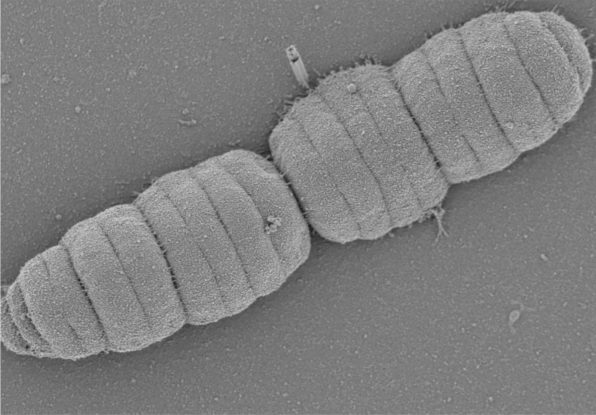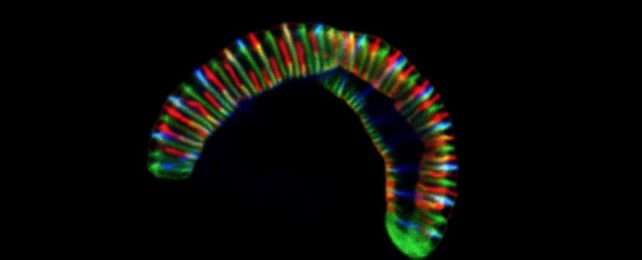You are very special. You're an individual with thoughts, feelings, your own unique set of experiences.
And you're so warm and moist – an ambulatory habitat for trillions of tiny, microscopic bacteria. Your skin, your follicles, your innards, are all crawling with little organisms too small to see or feel.
Shhh, it's OK. It's better this way. In fact, it is highly possible that you wouldn't be you without them. But some of those little microbes are pretty strange – evolving and adapting to the unique environments provided by the human body.
One of those, scientists have found, is a bacteria that lives in your mouth. Neisseriaceae is a family of microbes that includes caterpillar-shaped genera, found in about half of all humans, and new research suggests that they evolved this body shape because it's better suited to the environment in the human oral cavity.
This is pretty nifty, and gives us some valuable information on the biodiversity in your mouth.
It also has implications for the study of bacterial adaptability – which is really important for understanding how, for example, to develop more effective antibacterial agents to rid the body of infections.
"Our work sheds light on the evolution of multicellularity and longitudinal division in bacteria," write the team co-led by cell biologist Silvia Bulgheresi of the University of Vienna in Austria and microbial geneticist Frédéric Veyrier from the French National Institute of Scientific Research (INRS).
"[It] suggests that members of the Neisseriaceae family may be good models to study these processes due to their morphological plasticity and genetic traceability."
Although your mouth might seem like a pretty nice place for microbes to live, it isn't exactly the most welcoming environment. The cells lining the inner surface of your mouth are constantly being shed as new cells take their place, and your saliva makes things very slippery.
This makes it more difficult for any crawly things in there to find purchase (which, to be fair, hasn't seemed to slow them down – there are around 700 species that live in the human mouth).
Bulgheresi, Veyrier, and their colleagues believe that this might be why some Neisseriaceae species have developed an interesting way to multiply.
First, the team used electron microscopy to study the bacteria shape in detail, using fluorescence to understand cellular growth.
Then, they took rod-shaped Neisseriaceae and introduced genetic changes to see if they could reproduce the evolution from a rod-shaped organism to the caterpillar-shaped types of clusters that can be found wriggling around in the human mouth.

Their research suggests that the organisms did, in fact, evolve from a rod-shaped ancestor.
Today, the bacteria divide along their longitudinal axis, or the length of their body.
But, rather than separating, the individual bacteria then remain attached to each other, resulting in a segmented cluster wrapped in a shared outer membrane, a bit like a bacterial version of the rolly-polly mascot, Bibendum.
Some of the microbes in this tiny collective also take on different shapes, perhaps to perform different, distinct roles that benefit the group. This might be an example of how an organism evolves from a single-celled one into a multicellular one.
"Multicellularity makes cooperation between cells possible, for example, in the form of division of labor, and may therefore help bacteria to survive nutritional stress," the researchers write in their paper.
The team was unable to replicate the clustered shape of multicellular species such as Conchiformibius steedae or Simonsiella muelleri, perhaps because they could not introduce all the genetic events that led to the current caterpillar-shaped form. But the work did produce longer, thinner individual cells.
"We speculate that in the course of evolution, through a reworking of the elongation and division processes, the cell shape changed, perhaps to better thrive in the oral cavity," Veyrier says.
Genetic tools, the researchers note, will be required to explore the bacteria in greater detail.
However, the evolutionary approach could be a complementary way to study these tiny organisms and how they work, in addition to a better understanding of the mechanisms underlying the symbiotic relationship they have with their (comparatively) giant, mammalian hosts.
The research has been published in Nature Communications.
